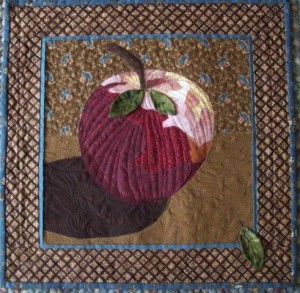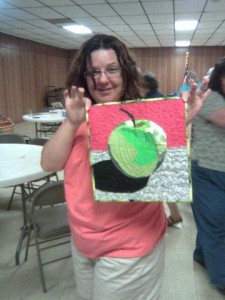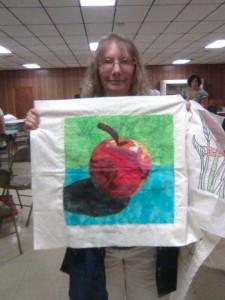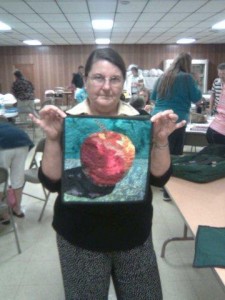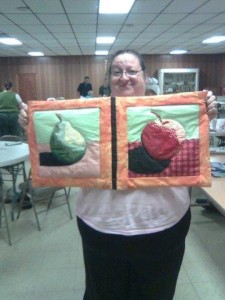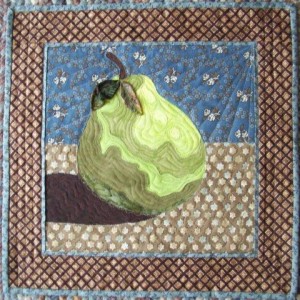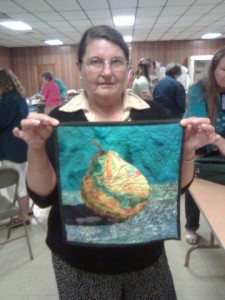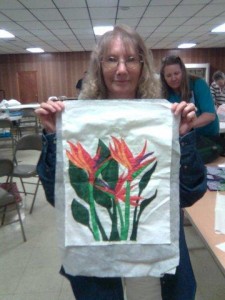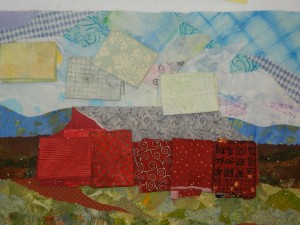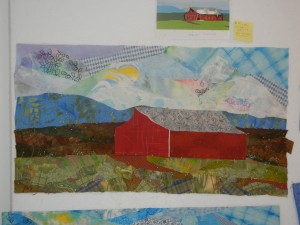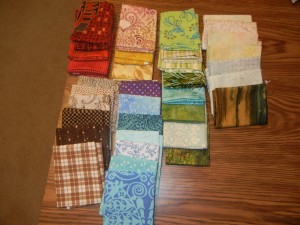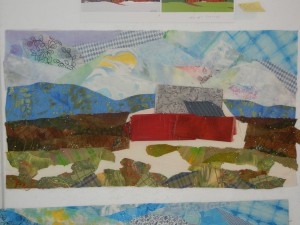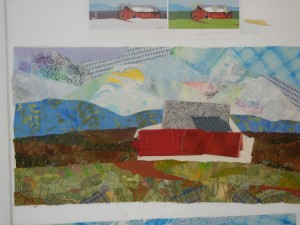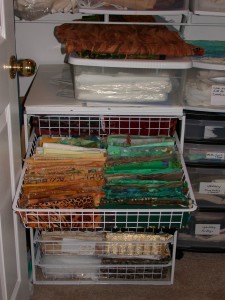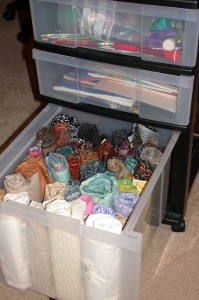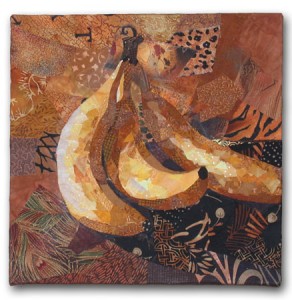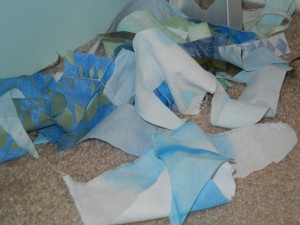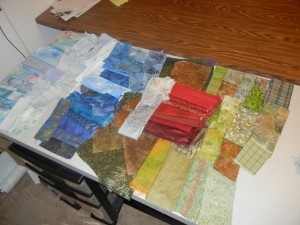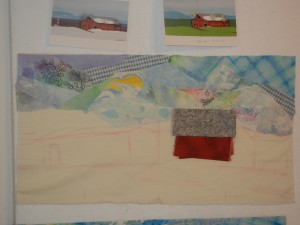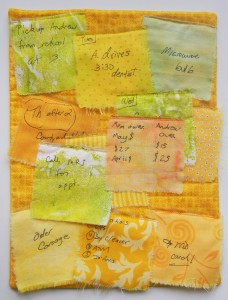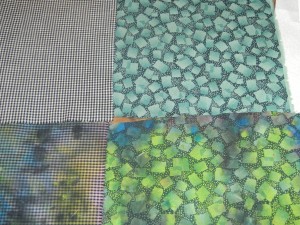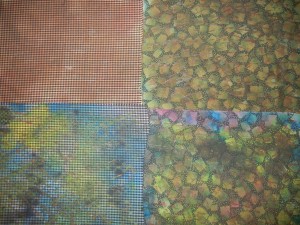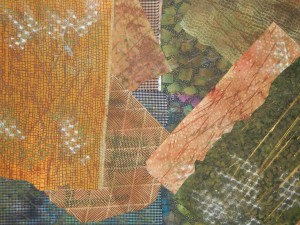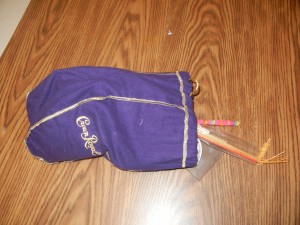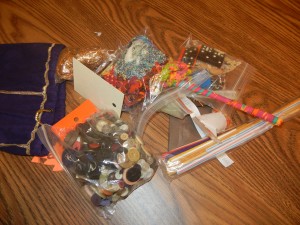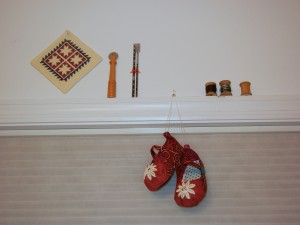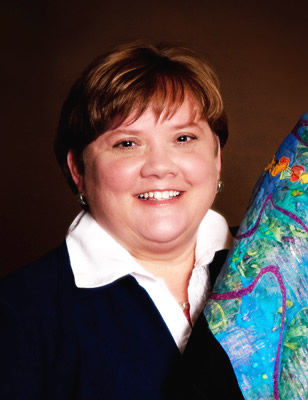Smiles and Apples and Pears, Oh My!
One of the exciting things about teaching is seeing my students achieve great results, and the joy they find in doing so. These photos, from a recent Show and Tell in Jacksonville, FL, show Double Reverse Applique students showing off their work.
During the class, students made an apple using the very easy DRA technique. And, several of them finished the class’s second project, a pear.
See better photos of Joan’s apple and pear in the DRA gallery, on my website.
Joan, (shown above and below,) sent me the nicest email about the class. Apparently, after seeing the class samples (and after having already signed up for the class,) Joan and Karen got a little nervous. She wrote:
“…I looked at karen and she had this look of pure horror on her face and said, “I ‘m not sure I can do this. I’m scared”. I replied right back to her, “Me too”. We both felt just by looking at the pictures of your examples that this was way over our head and very advanced so I said, “well, lets sit together and we can console each other”. So we did.
Boy were we wrong. We both had no problems with the workshop and both turned out beautiful awesome apples. Thank you so much for this wonderful workshop. You made us all feel comfortable and at ease, yet you were so knowledgable. I have now finished the pear …[and] I am so proud of it !! Now all kinds of ideas are swimming around in my head.”
Isn’t that great? And what’s more, Joan and Karen BOTH immediately used the DRA technique on their own designs! How awesome is that? See them below.
See what I’m talking about? How can I be anything but exhilirated with such wonderful results and enthusiastic students?
A big “thank you” to Shirley Wooten, for providing these photos.
Ellen Lindner
Additional resources:
A gallery of Double Reverse Applique quilts, most made by students
An ebook on Double Reverse Applique
An upcoming (online) Double Reverse Applique class
